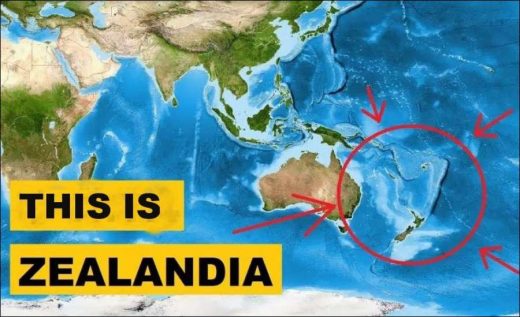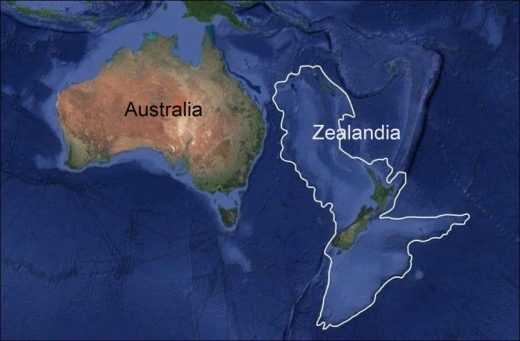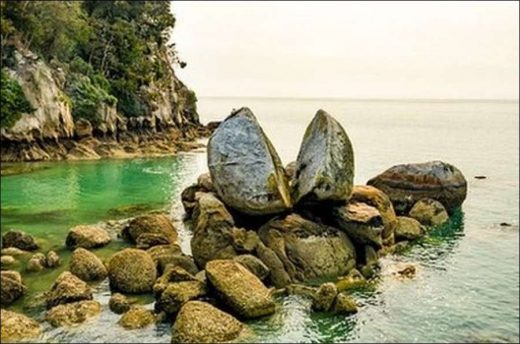Zealandia: The new continent. In 1642, Dutch sailor Abel Tasman had a goal. He was sure of the existence of a vast continent in the southern hemisphere and was determined to find it. Zealandia: The new continent that took 375 years to be discovered.
At that time, Europeans did not know much about this part of the world, but they believed that there was a large landmass there. It was time to see whether this belief, which has been around since the ancient Roman Empire, was true.
Tasman set out from Indonesia’s capital, Jakarta, on August 14 with two small ships, heading west, then south, then east, reaching New Zealand’s South Island. His first encounter with the local Maori people did not go well: on the second day, several Maori natives rammed the small boat carrying messages between two Dutch ships in their canoe. Four Europeans died. The Europeans then opened fire on 11 canoes.
This was the end of Tasman’s mission. He named the place where the incident took place the Bay of Murderers (Moordenaers) and returned to his country without even setting foot on the new lands he found. He believed that he had discovered the great continent in the south, but it was not the place he imagined. He never went there again. Tasman didn’t realize it, but he was right all along. There really was a lost continent.
In 2017, a group of geologists made headlines by discovering Te Riu-a-Māui, or Zealandia in Māori. This vast continent of 4.9 million square kilometers was approximately six times the size of Madagascar.
Encyclopedias, maps and search engines showed only seven continents, but geologists confidently announced that they had found the eighth continent. This continent is also the smallest, thinnest and youngest continent in the world.
The problem is that 94 percent of it is underwater, and only a few islands, such as New Zealand, emerge from the bottom of the ocean. In fact, it was in plain sight from the very beginning, but could not be seen.
“This is an example of how long it can take to uncover something that is actually very obvious,” says Andy Tulloch, a geologist at GNS Science, Royal New Zealand Research Institute, and one of the team that discovered Zealandia.
The discovery of Zealandia was just the beginning. Despite the passage of time, the continent still preserves its mystery under 2 kilometers of water. How was it formed? What creatures lived there? How long has he been underwater? Many of the questions are still unanswered.
A troublesome discovery
Studying Zealandia has always been difficult. More than a century after Tasman discovered New Zealand in 1642, English mapmaker James Cook was sent to the southern hemisphere. Its official mission was to observe Venus passing between the Earth and the Sun to calculate how far away the Sun was.
However, he was also given a sealed envelope to open after completing his first mission. In this envelope, it was reported that he had another top secret mission, probably asking him to explore the southern continent he had passed over.
The first real clues to the existence of Zealandia were found in 1895 by Scottish naturalist Sir James Hector, who set out on a voyage to investigate the islands off the southern coast of New Zealand.
After studying the geology of the islands, Hector concluded that New Zealand was “the remnant of a mountain chain at the top of a large continental area extending to the south and east and now submerged.”
Despite this early discovery, information about the possible continent of Zealandia remained unclear and not much was discovered until the 1960s. “Things are pretty slow in this area,” says Nick Mortimer, a geologist at GNS Science who led the 2017 research.
In the 1960s, geologists finally agreed on how a continent should be defined: They said it must be “a geological area of high altitude, with a wide variety of rocks and a thick crust.”
This gave geologists something to work with – if they could gather evidence, they could prove that the eighth continent was real. Still, things weren’t progressing. Exploring a continent was difficult and expensive; According to Mortimer, it wasn’t very urgent.
Around the same time, the “United Nations Convention on the Law of the Sea” came into force and there was finally serious motivation to investigate Zealandia.
The agreement stated that coastal countries could claim an “extended continental shelf” beyond their Exclusive Economic Zone, which extends up to 200 nautical miles from the beginning of territorial waters, and could benefit from all the oil and mineral wealth in this area.
If New Zealand could prove it was part of a larger continent, that area would be six times larger. Suddenly, funding for research and expeditions in the region increased, and over time, the evidence found increased. Every piece of stone collected contributed to the work of proving the existence of Zealandia.
Satellite data used to determine small changes in gravity in different parts of the earth’s crust to map the sea floor have culminated in the research.
With this technology, Zealandia could be clearly seen as a shapeless mass almost as large as Australia. The new continent had finally been proven to the world.
In addition to New Zealand, it also included the French colony of New Caledonia and Australia’s tiny Lord Howe Island, as well as a volcanic island called Ball’s Pyramid, which an 18th-century explorer once said “looks the size of a boat.”
Visits: 43





